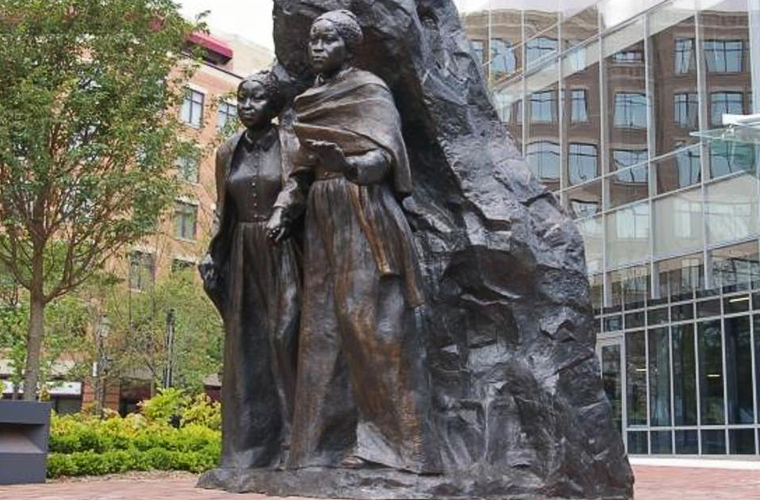1. Henry “Box” Brown
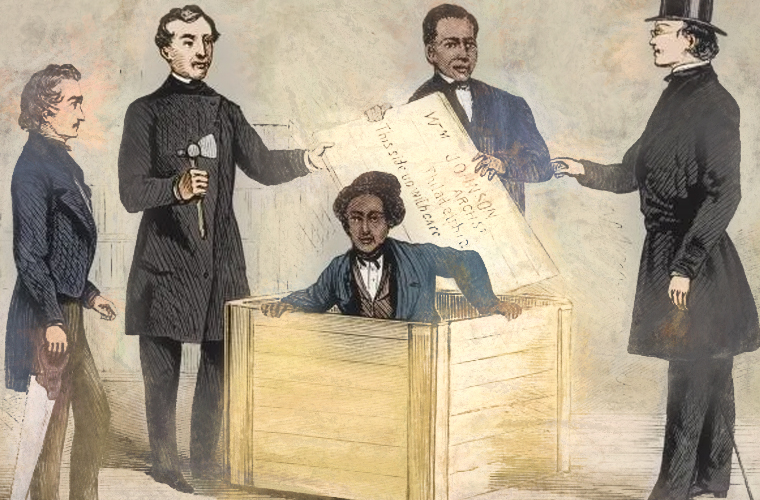 After his wife and children were sold and shipped away to another state in 1848, Virginia-born Henry Brown resolved to escape slavery by any means necessary. With the help of a free black and a white shopkeeper, he hatched a desperate plan to ship himself from Richmond to Philadelphia in a wooden crate. On March 23, 1849, Brown wedged himself into a three-by-two-foot box labeled “dry goods” and settled in for a long journey via wagon, steamboat, and railroad to the home of abolitionist James Miller McKim. He only had a few biscuits and some water as supplies, and during one leg of the trip, his crate was placed upside down on the deck of a steamship. Brown was left sitting on his head for 90 minutes, his eyes “swelling as if they would burst from their sockets.” He nearly passed out before two unsuspecting passengers flipped the box over to use it as a seat.
After his wife and children were sold and shipped away to another state in 1848, Virginia-born Henry Brown resolved to escape slavery by any means necessary. With the help of a free black and a white shopkeeper, he hatched a desperate plan to ship himself from Richmond to Philadelphia in a wooden crate. On March 23, 1849, Brown wedged himself into a three-by-two-foot box labeled “dry goods” and settled in for a long journey via wagon, steamboat, and railroad to the home of abolitionist James Miller McKim. He only had a few biscuits and some water as supplies, and during one leg of the trip, his crate was placed upside down on the deck of a steamship. Brown was left sitting on his head for 90 minutes, his eyes “swelling as if they would burst from their sockets.” He nearly passed out before two unsuspecting passengers flipped the box over to use it as a seat.
Brown arrived safely in Philadelphia after 27 grueling hours inside the cramped confines of the box. His incredible story made him a minor celebrity in New England, but he was soon forced to flee the country after the passage of the Fugitive Slave Act of 1850. “Box” Brown later spent several years in Great Britain hosting a stage act that documented his escape. He eventually returned to the United States in 1875 and worked as a magician. As part of each show, he would climb into the same wooden crate that had once carried him to freedom.
2. Frederick Douglass
In September 1838, 20-year-old slave Frederick Douglass fled his job as a Baltimore ship’s caulker and boarded a train bound for the North. The young bondsman was disguised in a sailor’s uniform provided by his future wife, Anna Murray, and carried a free sailor’s protection pass loaned to him by an accomplice. He desperately hoped the papers would be enough to lead him to freedom, but there was a major obstacle: he bore hardly any resemblance to the man listed in the documents. When the conductor came to collect tickets and check the black passengers’ papers, Douglass was nearly overcome with trepidation. “My whole future depended upon the decision of this conductor,” he later wrote. Luckily for Douglass, the man only gave the phony sailors’ pass a cursory glance before moving on to the next passenger.
 Douglass would endure even more close calls as he made his way north by train and ferry. He encountered an old acquaintance on a riverboat and was nearly spotted by a ship captain he had once worked for. After several tense hours, he arrived in New York, where he hid in the home of an anti-slavery activist and rendezvoused with Murray. The couple later moved to New Bedford, Massachusetts, where Douglass established himself as one of the nation’s leading abolitionists. He remained a fugitive slave under the law until 1846 when supporters helped him purchase his freedom from his former master.
Douglass would endure even more close calls as he made his way north by train and ferry. He encountered an old acquaintance on a riverboat and was nearly spotted by a ship captain he had once worked for. After several tense hours, he arrived in New York, where he hid in the home of an anti-slavery activist and rendezvoused with Murray. The couple later moved to New Bedford, Massachusetts, where Douglass established himself as one of the nation’s leading abolitionists. He remained a fugitive slave under the law until 1846 when supporters helped him purchase his freedom from his former master.
3. Robert Smalls
Robert Smalls’ incredible flight to freedom began in 1862 when he was working as a wheelman aboard the Confederate steamer CSS Planter in Charleston, South Carolina. When the Planter’s white crew took unauthorized shore leave in the early hours of May 13, Smalls and several accomplices sprang into action. After commandeering the ship, the slaves picked up their families at a rendezvous point and steamed into Charleston Harbor with Smalls at the helm disguised in the captain’s coat and hat. Smalls knew both the ship and the mine-infested harbor like the back of his hand, and he was able to give the proper signals to win safe passage by Fort Sumter. Once out of the Confederate guns’ firing range, he poured on the speed and made a mad dash for the Union blockade. Arriving under the white flag of surrender, the crew of runaways joyously offered up their ship to the first U.S. Navy vessel they encountered. “Good morning, sir!” Smalls shouted to the astonished captain. “I have brought you some of the old United States guns, sir!”
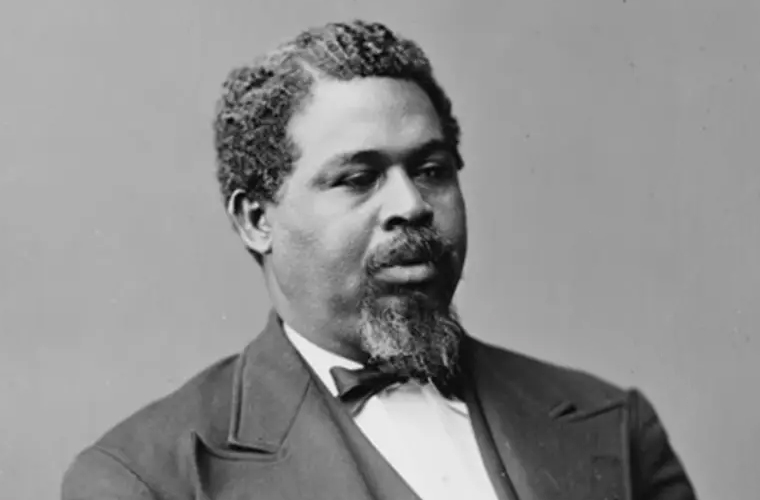 Smalls and his fellow escapees were hailed as heroes in the North, and their courage and cunning were held up as evidence that blacks could make good soldiers. Smalls later helped recruit as many as 5,000 blacks for the Union war effort, and served as the pilot and then later the captain of the Planter after it was refitted as a U.S. Navy vessel. After the war, he returned to South Carolina, bought his former master’s house, and went on to serve several terms in the U.S. House of Representatives.
Smalls and his fellow escapees were hailed as heroes in the North, and their courage and cunning were held up as evidence that blacks could make good soldiers. Smalls later helped recruit as many as 5,000 blacks for the Union war effort, and served as the pilot and then later the captain of the Planter after it was refitted as a U.S. Navy vessel. After the war, he returned to South Carolina, bought his former master’s house, and went on to serve several terms in the U.S. House of Representatives.
4. Harriet Jacobs
For Harriet Jacobs, escaping slavery meant hiding for several years in a prison of her own devising. Born a slave in North Carolina, Jacobs spent her teenage years living in fear of a cruel master who refused to let her marry and made repeated and increasingly brutal sexual advances toward her. When the harassment continued even after Jacobs had two children by another man, she resolved to take a break for freedom. In 1835, she fled her plantation and briefly hid in some friends’ houses. Knowing her chances of making it to the North were slim, she eventually holed up in a small attic crawlspace in her grandmother’s home. The rat-infested room was tiny—only nine feet long and seven feet wide, with a sloping ceiling that never reached higher than three feet—and Jacobs later wrote that it offered “no admission for either light or air.” Nevertheless, she would spend an astonishing seven years living in the coffin-like space, watching her children play in the yard through a small peephole and only leaving for brief periods of nighttime exercise.
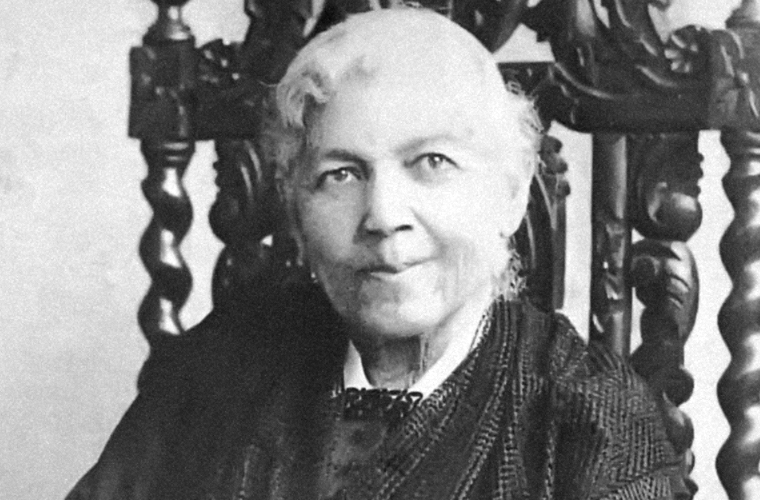
5. William and Ellen Craft
For sheer creativity and daring, few slave escapes can match the 1848 getaway masterminded by William and Ellen Craft. The two had married in Macon, Georgia, in 1846, but were held in slavery by different masters. Terrified of being separated, they devised an ingenious plan to flee the Deep South for Philadelphia. The light-skinned Ellen cut her hair short, dressed in men’s clothing, and wrapped her head in bandages to pose as an injured white man. William, meanwhile, assumed the role of her loyal black manservant. On December 21, 1848, the Crafts donned their disguises and boarded a train to begin the long journey North. The scheme seemed doomed from the very start after Ellen found herself sitting next to a close friend of her master, but her elaborate costume prevented her from being recognized.
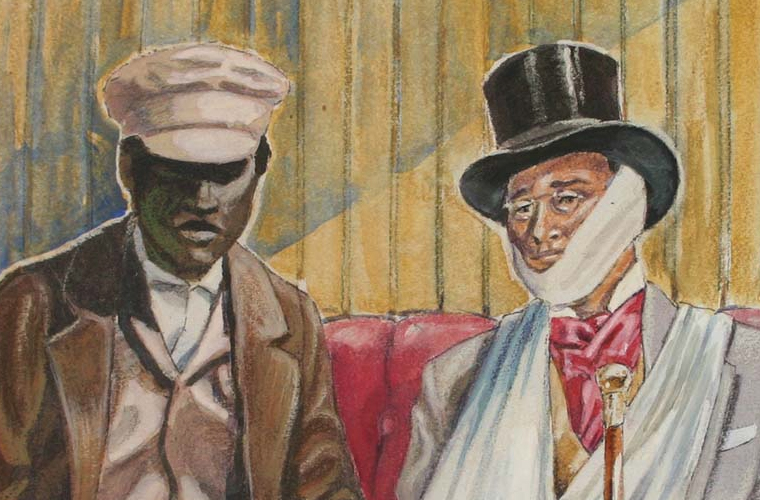 The Crafts spent the next several days traveling by train and steamer through the South, lodging in fine hotels and rubbing elbows with upper-class whites to maintain their cover. Since she could not read or write, Ellen placed her arm in a sling to avoid signing tickets and papers, but her ruse was nearly found out when a Charleston steamer clerk refused to sell the pair their tickets without a signature. Luckily for the Crafts, the captain of their previous ship happened to pass by and agreed to sign for her. The Crafts arrived in Philadelphia on Christmas Day and were sheltered by abolitionists before continuing on to Boston. Fearing slave hunters, the couple later set sail for England, where they wrote a popular account of their escape and raised a family.
The Crafts spent the next several days traveling by train and steamer through the South, lodging in fine hotels and rubbing elbows with upper-class whites to maintain their cover. Since she could not read or write, Ellen placed her arm in a sling to avoid signing tickets and papers, but her ruse was nearly found out when a Charleston steamer clerk refused to sell the pair their tickets without a signature. Luckily for the Crafts, the captain of their previous ship happened to pass by and agreed to sign for her. The Crafts arrived in Philadelphia on Christmas Day and were sheltered by abolitionists before continuing on to Boston. Fearing slave hunters, the couple later set sail for England, where they wrote a popular account of their escape and raised a family.

